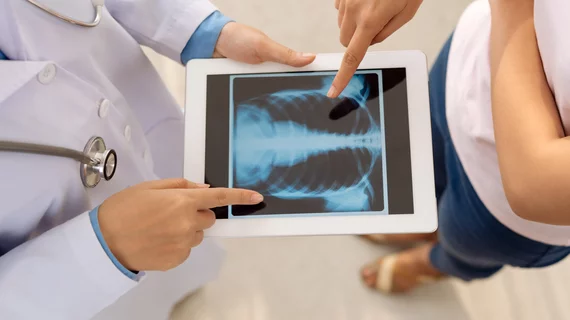‘It’s a nightmare’: Frustrations simmer among providers attempting to access outside imaging exams
Radiologists and emergency medicine providers alike are experiencing pain and frustration when attempting to access outside imaging studies. And such problems seem to persist, even when physicians have access to some of the better interoperability tools in the country.
In a recent survey at one New York City healthcare institution, researchers found that providers see high clinical value in outside imaging studies. However, gaining access to those images is often a “cumbersome,” “time-consuming,” “frustrating” and “painful” process, according to the results, published Feb. 5 in the American Journal of Roentgenology.
“It’s a nightmare,” one emergency medicine physician told surveyors.
Aiming to better understand these well-known frustrations, lead author Andrew Rosenkrantz, MD, and colleagues quizzed 34 radiologists and another 38 emergency medicine providers at a large academic medical center. The institution uses a common electronic health record system from Epic, and has access to Healthix—the largest public health information exchange in the U.S. Yet, those advantages did not seem to smooth out information-sharing obstacles, the researchers found.
“Numerous EM provider comments remarked on performing repeat imaging purely because they were unable to access the outside examination, doing so ‘often’ or ‘on many occasions’ and in turn extending the length of stay in the ED,” wrote Rosenkrantz, a radiologist and professor at NYU, and colleagues. “Numerous EM provider comments remarked on outside examinations often being received on CDs that were difficult and inefficient to access, if accessible at all,” he added.
Overall, the survey found somewhat misaligned perceptions between imaging experts and emergency docs. About 32% of radiologists said they’re confident in the quality of outside imaging from community facilities, compared to 55% on the EM side. Meanwhile, about 20% of rads had confidence in outside interpretations, versus about 45% of emergency docs. And just over 5% of EM physicians expressed confidence in their ability to efficiently access radiology reports from another healthcare entity, versus nearly 24% on the imaging side.
Rosenkrantz and colleagues noted that these low confidence levels underline the fact that further work is needed to build trust between healthcare institutions.
“Substantial challenges exist in accessing these images and reports from outside facilities, and providers are unlikely to do so using separate systems,” the team concluded. “However, even if information technology solutions for seamless image integration are adopted, providers' lack of confidence in outside studies may remain an important barrier.”

